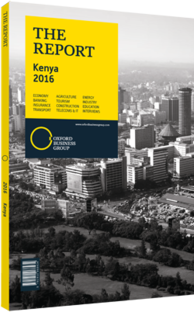New privatisation deals for Kenyan sugar industry
Having suffered years of decline, Kenya’s domestic sugar industry is set for renewal in 2015 with the announcement of plans to privatise five state-owned sugar companies. With imports rising and production falling, the potential for private sector expansion is considerable – though rising input costs, low productivity and an expected influx of cheaper sugar imports could limit private investment in the near term.
Sugar Conditions
While Kenya’s higher altitude means growing cycles can last up to 24 months, the predominance of small, rain-fed plots over large, irrigation-fed plantations has led to increased production costs. Since 2003 the government has sought to redress this imbalance through protectionist policies, yet this strategy has largely failed due to smuggling and mismanagement. The sector’s challenges have been compounded by a steady drop in sugar prices: 1 tonne of cane is worth KSh3200 ($35.20) in 2015, down from KSh4000 ($44) in 2003. In basic economic terms, it costs about $600 to produce a tonne of sugar in Kenya, double that of other sugar-producing members of the Common Market for Eastern and Southern Africa (COMESA).
Production
A single sector player, Mumias Sugar, is responsible for 30% of Kenyan production. However, after losing KSh2.08bn ($22.9m) in the latter half of 2014, the government (a 20% stakeholder) handed the company KSh500m ($5.5m) in bailouts in January 2015. Despite an audit and investigation, Mumias received a second bailout, worth KSh1bn ($11m), in mid-2015 and is expected to get another KSh5bn ($55m) in support later in the year.
The bailouts are accompanied by COMESA’s recent one-year extension of sugar import limits aimed at protecting local producers. Despite these, the government reported in August 2015 that Mumias lost half of its market share over the past four years, while state-owned South Nyanza and Nzoia have seen their shares decline by 5% and 1%, respectively. Meanwhile, private millers including Transmara, Sukari, Butali and Kibos have grown their market share by between 3% and 10% since 2012, prompting stakeholders to suggest that privatisation and modernisation are better suited to improve the ailing industry.
Privatisation
After more than 10 years of failed protectionism, the Kenyan government announced in May 2015 that it would initiate the sales of five state-owned sugar firms, at the same time writing off $603m in debt to further attract private investors. Throughout the rest of 2015, the government intends to sell stakes in the Miwani Sugar Company, Chemelil Sugar Company, Nzoia Sugar Company, Muhoroni Sugar Company and the South Nyanza Sugar Company, setting aside 51% for a “strategic partner” and 24% for growers and employees. This policy shift is already attracting attention from foreign investors.
US firm Dominion Farms intends to establish a 2023-ha sugar plantation and processing plant in Siaya County, near Kenya’s western border with Uganda. The operation will be set up in Ulungo, part of a 6800-ha parcel the company owns at Yala Swamp. Dominion Farms signed a 25-year lease with the local community for the property, and intends eventually to convert the swamp into arable land, in exchange for offering jobs to locals and agreeing to buy cane from residents for processing at its mill.
Another venture is coming from closer to home. In early 2015 Alteo, the largest sugar producer in Mauritius, announced it had completed due diligence on acquiring a 51% share in Transmara Sugar Company. The Transmara sugar zone, located in Narok County, is demonstrably more capable of supporting a thriving sugar plantation, with its cane and sugar yields roughly two to three times that of some parts of western Kenya. The Mauritian sugar industry is known for its competitiveness, primarily due to its use of up-todate production technology, and Alteo is expected to continue using this model in the Kenyan market.
You have reached the limit of premium articles you can view for free.
Choose from the options below to purchase print or digital editions of our Reports. You can also purchase a website subscription giving you unlimited access to all of our Reports online for 12 months.
If you have already purchased this Report or have a website subscription, please login to continue.

